Brant: Two Heralds before the City of Laurentum
Annotations
In the lower left of the image, two heralds stand in front of Laurentum, the city ruled by Turnus, and blow horns to alert the region of impending war (2-6). Within Laurentum, which is the large walled city in the upper left of the image, someone has raised the flag of war, bearing a dragon (1-2). On the left, a handful of soldiers led by Venulus set out toward Argyripa, the city of Diomedes, to bring news of Aeneas and seek an alliance (9-17). The two ships in the background might belong to Aeneas. (Katy Purington)
Woodcut illustration from the “Strasbourg Vergil,” edited by Sebastian Brant: Publii Virgilii Maronis Opera cum quinque vulgatis commentariis expolitissimisque figuris atque imaginibus nuper per Sebastianum Brant superadditis (Strasbourg: Johannis Grieninger, 1502), fol. 309v, executed by an anonymous engraver under the direction of Brant.

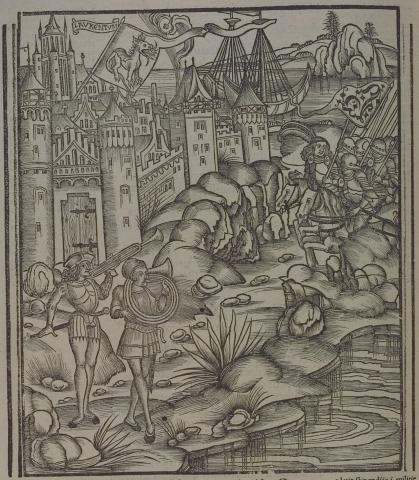
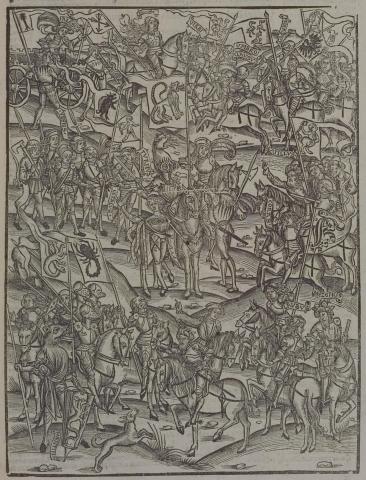
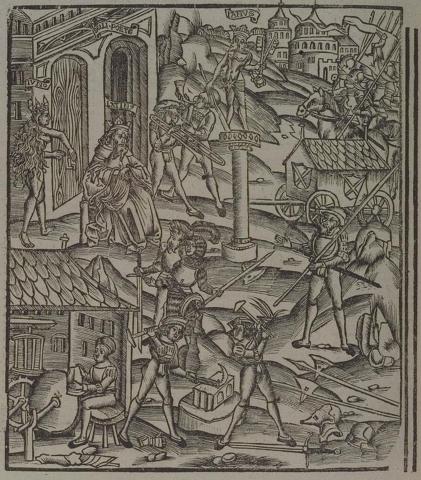
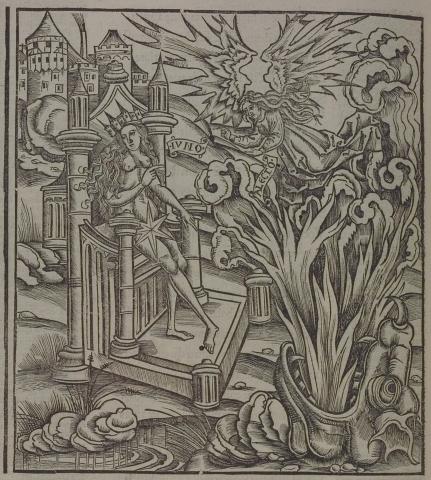
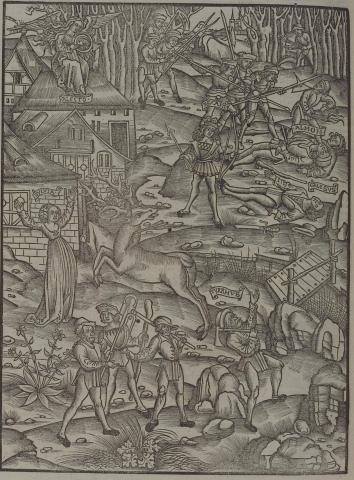
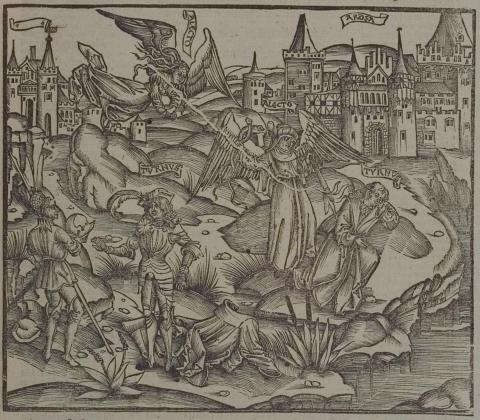
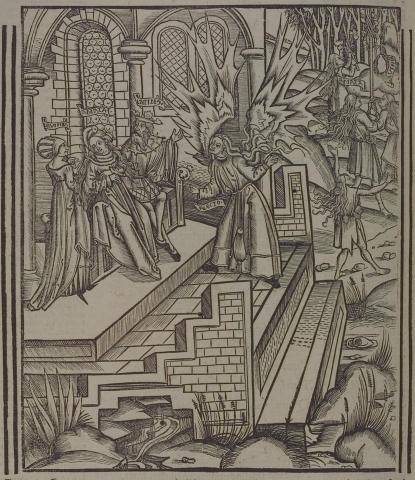
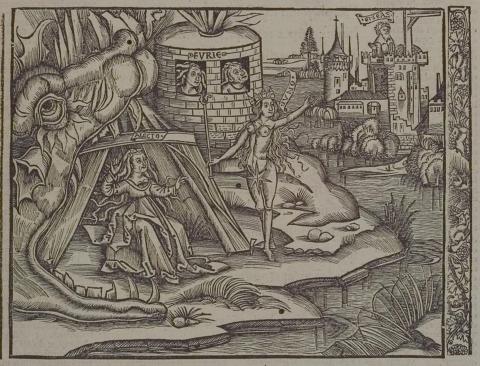
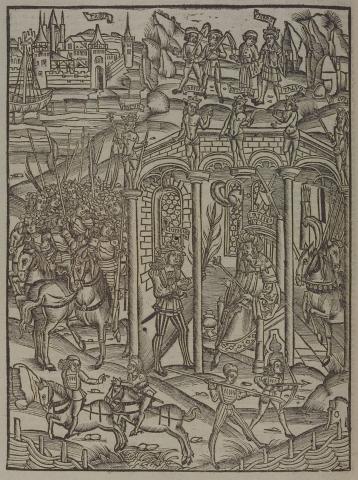
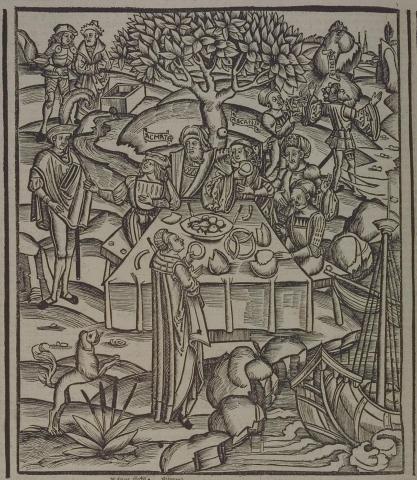
Sebastian Brant (1458-1521) was a humanist scholar of many competencies. Trained in classics and law at the University of Basel, Brant later lectured in jurisprudence there and practiced law in his native city of Strasbourg. While his satirical poem Das Narrenschiff won him considerable standing as a writer, his role in the transmission of Virgil to the Renaissance was at least as important. In 1502 he and Strasbourg printer Johannes Grüninger produced a major edition of Virgil’s works, along with Donatus’ Life and the commentaries of Servius, Landino, and Calderini, with more than two hundred woodcut illustrations. (Annabel Patterson)